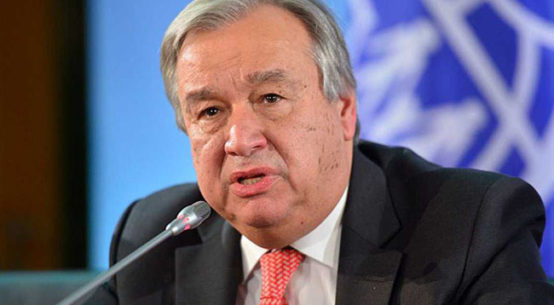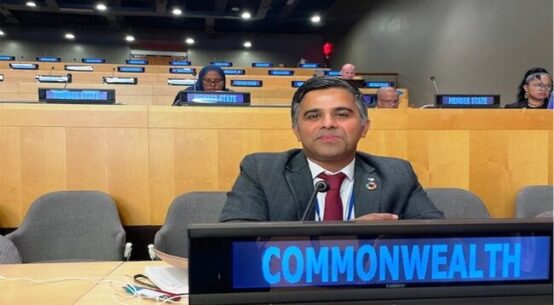
When Bangladesh was emerging from the ashes of the brutal war of independence in 1971, Bangladesh was among the poorest nations in the world and on the edge of becoming a failed state. It was however, difficult to predict Bangladesh would turn-out to the most emerging nations today.Now, the whole world is amazed seeing the miraculous advancement of Bangladesh. World Bank, International Monetary Fund (IMF), Asian Development Bank (ADB), Islamic Development Bank (IDB), JICA and other world famous economists have expressed their astonishment seeing the miraculous development of Bangladesh. Today, Bangladesh is considered as an emerging tiger to the global arena. But the main question is how Bangladesh moved from a “Basket case” to a development surprise”. People usually say, there must be a story behind each and every success. So, what’s the story behind Bangladesh’s remarkable development?The hero of this story was none butthe Bangabandhu Sheikh Mujibur Rahman who was the dreamer of today’s Bangladesh. Under his charismatic leadership the Bangalee nation got a free state in the global map.
Bangladesh has come a long way since its independence in 1971. It’s infrastructure has been developed from it’s primitive state. After the independence; there were so many new developments in industrial sector. Such as, Garments, Textile, Leather, Ceramics, Pharmaceuticals, Cement etc.The GDP of Bangladesh is largely driven by its exports of readymade garments, remittance and the domestic agriculture sector. In 1971 the GDP of Bangladesh was 2-3%, where it is now 8.15%. Bangladesh joined the lower middle income country category on 1 July, 2015. Bangladesh has become eligible to move out of the list of Least Developed Countries (LDCs) to a developing nation.
Those, who once used to criticize about Bangladesh, today they are praising seeing the development. Nobel Laureate Professor Amartya Sen remarked that Bangladesh has astonished the world with the level of progress it has achieved in certain areas, especially in education, women’s empowerment, reducing birth, maternal and infant mortality rates, early marriage, health and sanitation facilities for marginalized people etc.
Some of the social indicators in Bangladesh are better than those of India and Pakistan.Bangladesh’s annual GDP growth has exceeded Pakistan by roughly 2.5% points per year.Our population growth rate is 1.1%, while in Pakistan, it is 2%. Our average life expectancy is now 72 years while in India it is 68 years and in Pakistan it is 66 years. Now, the economic growth of Bangladesh is quite equal to Canada. Bangladesh has been on the right path towards becoming a part of regional and global economy, taking full advantage of its geographic location. Standard Chartered Bank, the world famous financial institution has predicted that by 2030 Bangladesh will be richer than its neighboring country India. The centre for Economics and Business Research (CEBR), a UK based research firm has predicted that by 2030 Bangladesh will be the 23rd largest economy in the world. Currently, Bangladesh is the 43rd largest economy in the world. According to the World Economic Forum’s Inclusive Development Index, Bangladesh is the 34th largest economy in the world which is ahead of many established nations and by 2030; it will be the 24th largest economy in the world. The World Economic League Table, Bangladesh’s economy predicted that, Bangladesh will make one of the biggest jumps within 2034. Bangladesh has been enlisted into the “Next Eleven Countries” by Goldman Sachs-South Korea, Mexico, Bangladesh, Egypt ,Indonesia, Iran, Nigeria, Pakistan, Philippines, Turkey and Vietnam- which are ready to become the world’s biggest economics in the 21st century, after the BRIC countries ( Brazil, Russia, India, and China)
The per capital income will be 5500 by 2031 and it will be 16000 by 2041 as our government pursues the “Vision 2021”.Once upon a time when we used to import almost all the products from the foreign countries. But now we are exporting medicines, furniture, leather, medicine, making ships etc. The RMG sector is holding the second position in the global economy.Every year our export volume is increasing. Remittance from the expatriates has been increased. We are now self sufficient in food production. Bangladesh is now the 3rd biggest inland fish producer in the world. Today there is no shortage of food in our country and no person die due to hunger. Even we have achieved the capacity to export the surplus production to foreign countries. “Monga” is totally vanished. In 1971 only 10 million metric ton rice was produced, while now it is 160 million metric ton. Our foreign currency reserve is $32,381.5 million.
The urban-centric development initiatives have accelerated the equitable development process for rural and urban. Our country has made remarkable progress in the reduction of fertility rates from 6% to 2.2%. The school participation rate is quite equal in the primary level. Moreover gender discrimination in the secondary school has been disappeared. Every Year near about 40 million school students get new books at the first day of the year. According to the Global Gender Gap Report Bangladesh is a bright example among the South Asians country in ensuring gender equality. Bangladesh is an example in the global trend where the Prime Minister, the Head of the opposition party and the Speaker of the Parliament are female.
The per capital income is $1,909. The current GDP is 8.15%. The current poverty rate came down to 20.5%. Due to the economic power, the people’s purchasing power has been increased. The current inflation rate is within 5%. We have ranked better in the Human Resource Development index. Foreign investment is increasing here as we can provide all sorts of logistic supports to the foreign investors in accordance to their desire. Bangladeshi Scientist Dr.MaksudulAlam had decoded the genome sequence of Jute fibre. Out of the 17-genome sequence that have been globally decoded, Dr MaksudulAlam decoded 3 of them. It’s really a very big achievement for the whole nation. With the launching of Bangabandhu Satellite, Bangladesh has cemented its place in the space.
Today Bangladesh has achieved economic strength. The Education Assistance Trust act-2012 has been passed to support the underprivileged meritorious students. The National Health Policy-2011 has been implemented to modernize the health sector.Government has taken different steps by prioritizing the issue of “Autism”. In this regard a centre for Neurodevelopment and Autism has been established at Bangabandhu Sheikh Mujib Medical University. Government has increased the amount and scope for various social security allowances targeting the poor, distressed, vulnerable citizens like; widows, abandoned wives, senior citizen, distressed woman, poor physical disable citizens etc. We are constructing the Padma Bridge with our own finance. Besides this, some massive projects are being constructed here; Rooppur Nuclear Power Plant, Metro Rail Project, Karnafully Tunnel etc.
Our country is committed to be transformed into a developed country by 2041. We have already achieved the Millennium Development Goals (MDGs) successfully. Now Bangladesh is committed to the objectives and realization of the Sustainable Development Goals (SDG) adopted by the United Nations General Assembly. Government has adopted Delta Plan -2100 to build Bangladesh as the most developed in the next century.
In foreign policy Bangladesh has made a remarkable success. The government has been consistent in upholding the principle of “Friendship to all, malice towards none” as enunciated by father of the nation. Relationship with India and China has opened a new avenue of cooperation. Bangladesh became a member of the UN Security Council four years after its admission to the UN. The foreign Minister of the then Bangladesh was the president of UN General Assembly in 1986. Bangladesh is contributing to the UN peacekeeping missions. Bangladesh can be proud for introducing the concept of Micro-Credit to the world.
Now, the question is whether Bangladesh’s strong economic growth can be sustained? I am optimistic that the existing rate will be sustained. As In Bangladesh,majority people are hardworking and innovative. Especially, our Prime Minister is none but Sheikh Hasina, the able successor of Bangabandhu Sheikh Mujibur Rahman who is working relentlessly to materialize the dreams and incomplete works of her father. Our honorable Prime Minister often says,” I am working to fulfill Bangabandhu’s dream, and I don’t care about any conspiracy against that. It seems the Almighty is giving me the scope to establish Bangabndhu’s“Sonar Bangla”. By giving his blood Bangabandhu showed the path of freedom. So we will have to establish that ideal at any cost of any sacrifice. I am ready for that sacrifice.” The economic experts are also optimistic about the country’s uninterrupted high economic growth. Moreover, Bangladesh is a country where 47% of the total population are younger than 35. If these young people can be properly utilized, then they can change the full appearance of the country. But, the biggest challenge is that, how to turn its population into human assets?
It’s the high time to realize our achievements, on the other hand acknowledge our shortfalls. The major challenges of the Bangladesh economy in the upcoming year will be compounded by several factors such as; sluggish private investment, negative export , tepid revenue collection, increasing of Nonperforming loan, poverty, overpopulation, unemployment, corruption, poor governance etc.Corruption is extremely pervasive in the society. World Bank has identified job creation as the country’s top development priority. Bangladesh needs to create more job opportunity to manage the unemployment problem. The existing infrastructure is not capable to keep pace with the economic growth.
The export basket of Bangladesh is still very small and there are very few buyers. 80% of the total export comes from the RMG sector. Export need to be diversified and has to be targeted towards a large number of countries. Income inequality isstill rising.Millions still live below the poverty line; corruption is still available in our public institutions. Bangladesh, being an agricultural country, climatic change may hamper the agricultural sector severely especially the pattern of rainfall and also the food production. Bangladesh has one of the lowest tax-GDP ratios in the world. Many rich people have the tendency to avoid income tax. For the last few years revenue generation is far below than the expectation. Without adequate domestic resource mobilization, implementation SDGs will be quite difficult. Exchange rate appreciation is another challenge for Bangladesh’s trade competitiveness. Many do not have the purchasing power. Communities in remote areas such as those who live in the island chars or in the hill tracks are lacking in most of the basic services. Moreover, the country has faced military rules several times
Bangladesh Government has chalked out vision 2021 program aiming to raise GDP growth rate to 10% by 2021.This is in line with the objective to elevate the country as a middle income country. The implementation of SDGs and Bangladesh Delta Plan 2100 will be dependent on the combination of three factors namely resource mobilization, improved governance and eradication of corruption. We must ensure good governance, social justice, transparency and accountability to make the development sustainable.
This year Bangladesh is celebrating its 50 years of independence. In 1971 when Bangladesh emerged from the liberation war, many doubted that the country could survive as an independent state but today after 50 years later, those doubts have been put to rest. Bangladesh has become a “Role Model” of socio-economic development in the world despite facing various local and international challenges.
Md. Mizanuris an Associate Member of the Institute of Chartered Secretaries of Bangladesh (ICSB)


